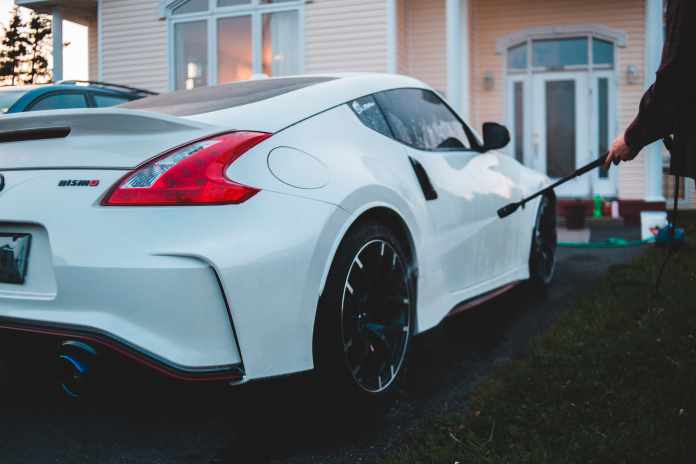Looking for a fun and effective way to clean outdoors? Why not try pressure washers! We all know that one of the most important ways of maintaining buildings, parking spaces, and even vehicles is by regular cleaning. However, hand cleaning might not effectively clean dirt; that’s where pressure washers come in handy. They can be used on a variety of surfaces, including but not limited to; bricks, concrete, granite, etcetera. Have a look at the guide about Pressure Washing 101:-
How Pressure Washers Operate;
Like their name suggests, the equipment applies water pressure to a given surface, thus breaking its bond with dirt. Pressure washers are either electric or gas-powered. Whether gas engines or electric motors power the machine, the cleaning process is determined by water pressure delivered per minute and water supply. So which pressure washer should you choose?
The choice depends on various factors, such as the cleaning being done and your water supply. For light cleaning such as cars, outdoor grills, and removing dust on surfaces, an electric pressure washer will suffice. Its pounds per square inch (PSI) averages between 1,300 and 1,400. Moreover, they produce less noise and are easily mobile.
On the other hand, if you are looking for heavy-duty equipment for jobs such as preparing walls for painting and deep-cleaning concrete, gas-powered washers are the best choice. Although they consume more water, they deliver a PSI of 3000 and above hence clean faster and efficiently.
After choosing which pressure washer suits your needs, learning how to use them properly is essential. Below are % beginner tips that will have you operating your pressure washer like a pro in no time.
Safety Tips
While pressure washing can be fun, it can cause property damages and even injuries to the user or people around them if misused.
To safely use a pressure washer, follow these precautions:
- Remember to wear protective gear such as:
- Gloves to protect your hands from power washer injuries.
- Goggles to protect your eyes from possible small flying debris from the clean.
- A pair of gumboots for maximum foot protection.
- Earmuffs mainly when operating gas-powered pressure washers as they produce loud enough noises to impair hearing.
- Evaluate and decide to pressure wash on days that have the least interferences.
- Clear the area by picking up any litter, removing vehicles on areas to be cleaned
- For large stains or spots, it is recommended to apply a pre-treatment solution before pressure washing.
- When in use, do not point the pressure washer to yourself, others, or pets, as the pressurized water could cut through the skin, causing severe injuries.
- Do not use pressure washers on high heights; the force emitted on the spray wand may cause you to lose balance and fall.
- When pressure washing around power lines or electric outlets, always maintain a 6 feet minimum distance between you and the surface.
Operational Tips;
Setting up a pressure washer may vary from one machine to the other. However, the process is simple if the following steps are followed:
- Carefully read the manual to learn how to use the machine properly. Pay special attention to essential troubleshooting tips and correctly switch off the equipment in case of an emergency.
- Connect the water supply to a garden hose.
- Attach the garden hose and any other accessory such as spray gun, high-pressure hose, and tip to the pressure washer.
- Remove air blocks from the system by running water through the pressure washer.
- Next, start the fuel supply valve and set the choke.
- Finally, switch on the engine and pull the start cord.
Remember that the water running through the pump maintains optimum temperature; therefore, avoid running the engine for long periods when the spray gun is not in use.
Choosing the Right Spray Nozzle;
The type of spray nozzle used significantly affects the quality of cleaning. Pressure washers that offer PSI less than 2,400 mostly come with a single spray nozzle. The nozzle is adjustable and delivers fan patterns ranging from 0 to 60 degrees. Heavy-duty equipment delivering a PSI of over 3000 comes with four or five colored nozzles. These nozzles create various fan patterns. Wider nozzles are used for detergents, medium for general cleaning, while narrow nozzles are ideal for deep cleaning. To avoid structural damage, ensure that the nozzle is adequately fitted to the trigger before using.
Water Supply;
Pressure washers have specified gallons per minute. It is therefore vital to ensure that your water supply can deliver the required GPM. Higher levels of gallons per minute levels result in faster cleaning as the quantity of water being released increases. To ensure uninterrupted water supply throughout the system, check the filters and remove any debris that might be there.
Detergent;
Ensure that the chemicals used in pressure washing are approved for that pressure washer. Pressure washers come with a detergent injector that ensures a continuous flow of cleaning detergent into the water system. Also, it is essential to choose cleaning solutions that are suited to clean the intended surface as various surfaces react differently to detergent.
From cleaning vehicles, parking surfaces, and walls, pressure washing effectively and quickly provides the desired results. While this cleaning method can be fun and efficient, it can also cause harm to property and injuries if not properly handled. The good news is that these damages can be easily avoided by following the above tips.
















